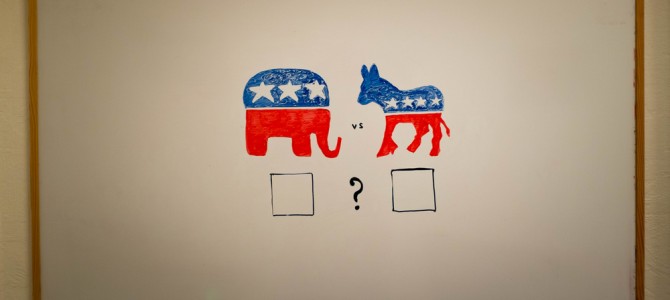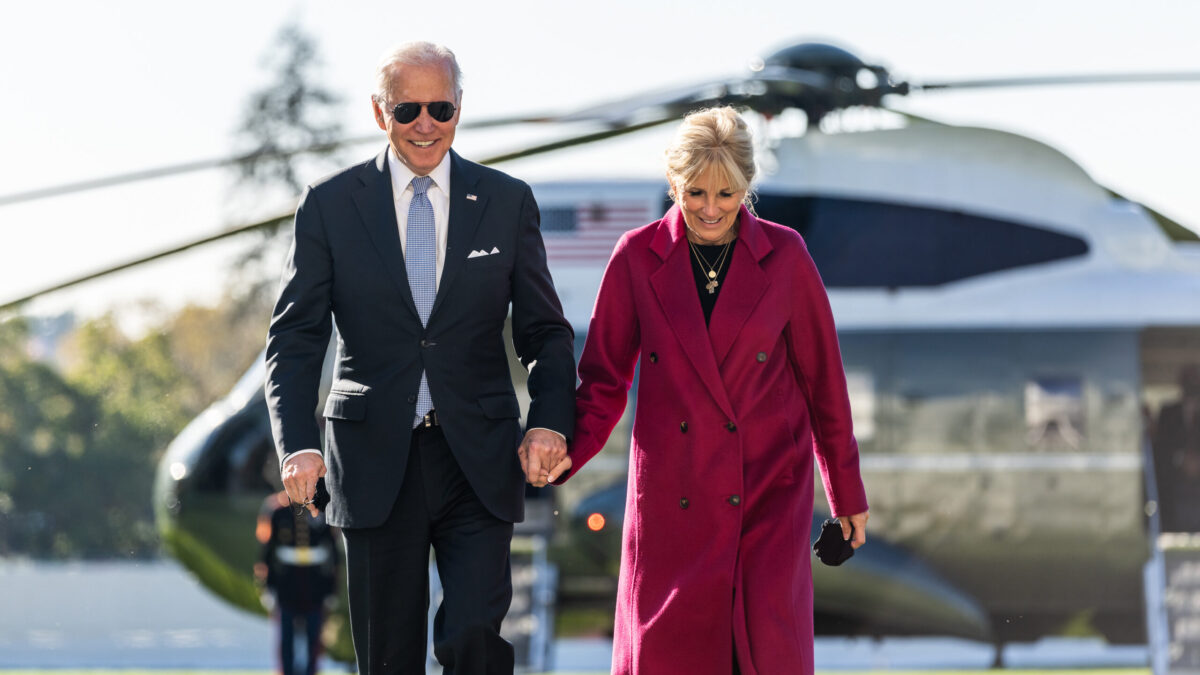
Since Donald Trump clinched the Republican nomination on May 3, several Republicans (or former Republicans, as we are now) have called for an independent candidate to run against both Trump and presumptive Democratic nominee Hillary Clinton. Others, including me, have gone further, and called for an entirely separate and new political party. Or, as I tweeted the evening Trump won Indiana and Cruz dropped out:
Today is the birth of the #FederalistParty.
— Paul D. Miller (@PaulDMiller2) May 4, 2016
I confess I am torn: Do we need a third candidate, or an entire third party? The answer depends on how far down the rot goes. Perhaps Trump’s nomination is an aberration, a freak occurrence, and soon everything will go back to normal and we can all remain faithful Republicans.
But if Trumpism goes further—and there is some evidence it does—then Trump is just a symptom of a deeper disease, requiring a deeper cure. If the Republican Party is indeed becoming the party of nativism and white grievance all the way down to the state and local level, it is doomed. A new party, a new platform, with new offices, new candidates at every level, a new everything—even a new logo and a new mascot animal—is in order.
As an experiment, I did some digging to find out where my state and local officials stood, most of whom are Republicans. My state representative, Paul Workman, pleaded neutrality. No one picked up the phone at the office of my state senator, Kirk Watson—but he’s a Democrat, so I suspect I know where he stands. My U.S. representative, Roger Williams (Texas 14), endorsed Trump. Gov. Greg Abbott urged the party to unify behind the nominee. The U.S. senators from Texas include Cruz, who hasn’t made a statement yet, and John Cornyn, who strongly indicated he would endorse Trump once officially nominated. All told, the Texas Republican Party is not exactly making a principled stand against Trump.
I suspect we won’t know for certain until November. If Trump wins, his victory vindicates Trumpism. The cancer will have metastasized and taken over the host, and all is truly lost. If he loses, his loss will (hopefully) discredit Trumpism and create the opportunity to take the Republican Party back.
As an aside, there is no realistic chance of forming a new party in time for it to field a candidate for president this year. If we have a third candidate, he or she will almost certainly be an independent. The work of building a new party, if build we must, will be the work of years and will only truly begin after November.
Replace the Second Party, or Replace the Two-Party System?
As I think about the formation of the Federalist Party, another defining question arises. Is the goal to create a new option that will live alongside the Democratic Party and the Republican Party as a genuinely third option? Or is our goal to euthanize the sickened beast that the Republican Party has become, and take its place as one party in the existing two-party system? In other words, do we want to overthrow a political party, or the two-party duopolistic system itself?
My instinct is to say the latter. Killing and replacing the Republican Party leaves the two-party system in place with all its ossified faux drama and predictability. The same incentives are still in play, and many of the same people will simply gravitate to the new party and corrupt it all over again.
We should also not aim to just create one more party inside the existing two-party system because, in truth, a dozen “third parties” already exist, including the Libertarian Party, the Green Party, the Constitution Party, the Socialist Party, and more. They never win anything, and neither would yet another new party.
If we do the work of writing a new platform and filing the correct documents and creating the Federalist Party on paper, it will have all the same insignificance of every other fringe party. We get the frission of bucking convention and the insular, self-congratulatory thrill of protecting our intellectual integrity—and nothing else. Intellectual integrity is wonderful. It does not, by itself, win elections and pass legislation.
If we want to see real change, we should seek to bring down the two-party system itself.
Why Don’t Third Parties Win?
Why do Americans only vote for two parties, when a dozen or more actually exist? The answer—stay with me—has to do with the obscure topic of electoral law. The way the American electoral system is designed creates certain incentives for voters and parties to arrange themselves into two massive conglomerations instead of many different, smaller, more coherent groupings. For those of you still reading, here is a basic primer on Electoral Systems 101. (For everyone else, skip to the end.)
It is easiest to understand by contrasting the American system with the more common parliamentary system. In the American system, a single representative represents a congressional district. Voters go to the polls and cast their votes for individual candidates. Whoever gets the highest number of votes—usually, whoever wins at least 50.1 percent—wins that seat in Congress. Political scientists call this the “first-past-the-post” or “winner-take-all” system, because the first candidate who makes it past the all-important benchmark of 50 percent wins all the spoils.
By contrast, in most parliamentary systems (except Britain’s; they’re weird), a given constituency (like a congressional district) is represented by more than one member in parliament. Parties present a slate of candidates. Voters cast their votes for their preferred party. Parties receive the same proportion of seats as they received of the vote. Political scientists call this a “proportional representation” system.
In the American system, there is an overriding incentive to put together a coalition that gets you to 50.1 percent. Second-place candidates get nothing. There is no consolation prize. So because voters like to be on the winning side now and then, there is no incentive to participate in a political party that never gets to 50.1 percent.
By contrast, in the parliamentary system a party that gets 10 percent of the vote gets 10 percent of the seats in the legislature. That’s a huge difference. Parties that will never get to 50.1 percent still have access to real political power, and voters have an incentive to gravitate towards parties they actually agree with rather than massive, incoherent agglomerations of interests cobbled together for the sake of achieving an artificial majority.
You Want a Revolution? Try Proportional Representation
In the United States, every legislative election I’m aware of is governed by the winner-take-all system, including for the U.S. Congress and every state legislature. Switching to proportional representation at the state and national level would be the most significant change to our system of government since the Civil War, if not the Constitutional Convention. Such a change would fundamentally alter American politics, catalyzing the most sweeping and fundamental realignment in American history.
Thomas Jefferson famously said “I hold it that a little rebellion now and then is a good thing, and as necessary in the political world as storms in the physical.” Voters are in the mood to burn the system down. Fine: here is a way to burn down the two-party system, with the added advantage of not electing a fascist in the process.
Here are at least four ways it would change American politics.
- More parties. The fastest way to create not just a third party, but a fourth and fifth, is to change the states’ electoral laws and create something closer to a proportional representation system. Imagine if Texas allocated its 36 congressional seats and hundreds of state House and state Senate seats this way. You would almost certainly see the Libertarian Party suddenly and dramatically increase its share of the vote as voters realize they can actually elect libertarians. You might also see a handful of honest-to-God socialists elected from Austin.
- More democracy. Such a system would be more truly democratic. Only a third of Americans identify as Republican and a third as Democrats—yet nearly 100 percent of all elected offices nationwide are held by the two parties. Enabling more parties to compete for and win seats will allow the rest of Americans to actually be represented in their government. Imagine that.
- More honesty. Such a change would make our political discourse more honest. Right now apologists for the two parties stretch credulity weaving artful lies about their party’s coherence and philosophical grounding. There is no overarching philosophy for either party: they are agglomerations of interests cobbled together to form a majority coalition. By contrast, in a proportional representation system, parties can stand for actual ideas, and citizens can argue for them with a straight face and without lying.
- Stronger parties, fewer celebrities. A proportional representation system would also empower parties and deemphasize celebrity candidates. Assuming parties control the candidate lists put up at election time, there would be no Trumps—and no Schwarzeneggers, no Venturas, and definitely no Kardashians.
What About the President?
That still leaves the question of the presidency. Proportional representation only applies to legislative elections. There is only one president. How would presidential elections work in a system with multiple parties that compete for legislative seats in a proportional representation system?
I can think of two scenarios. First, parties and candidates might actively work to form coalitions before the election. A candidate might seek the nomination of the Republican, Libertarian, and Federalist parties simultaneously to signal his or her willingness to govern at the overlap of their agendas. This is more or less what happens now, except the bargaining happens opaquely, within the broad and ungainly Republican Party, through the complex and unsatisfying process of the primary elections.
Second, we might actually get more than two credible presidential candidates. Imagine a general election contest between a Republican, a Federalist, a Democrat, and a Socialist. It would be unpredictable and exciting, and it’s possible no candidate would win a majority of the Electoral College, in which case the House of Representatives elects the president. The election of 1824 played out along these lines, and the election of 1860, in which four major candidates competed in the general election, nearly did.
Amazingly, in neither scenario will American democracy end. I am always amazed at how instinctively conservative people are (in the sense of resisting change because it feels scary) when faced with the prospect of new ideas and unpredictability. Our institutions and our ideals of self-government will endure—in fact, they will probably thrive and regain some of their liveliness.
Fundamentally altering American electoral law may sound politically infeasible, but it needn’t be. Election law and district boundaries are almost entirely governed by state law, not federal or constitutional law. The states are supposed to be the laboratories of democracy. One or two states could try switching to proportional representation for state legislative elections as a sort of trial run. Getting one or two states to try it shouldn’t be impossible, especially if a handful of interested citizens run for office on a platform of electoral reform. Any states most interested in breaking the two-party hammerlock on American government should go first.









